Wondering how to train a dominant dog? Don't fret — this problem CAN be solved, and quickly, too…let's get into it!
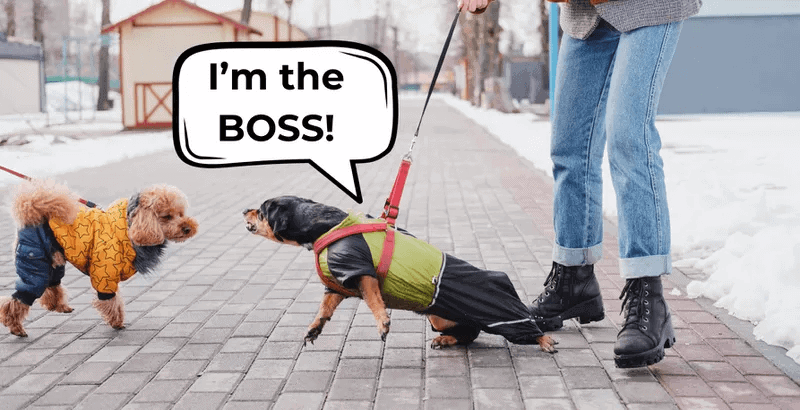
The question of how to handle a bossy, dominant dog is common among dog owners who are exhausted, frustrated, and overwhelmed by their bossy dogs.
BOSSY DOMINANT DOGS: they always want to be in charge of every dog they encounter.
They love challenging authority, display brute strength, and don't hesitate to show aggression.
Pet owners can say “Oh, but that's just a dog's personality!”
One can say “Oh, but that’s just a dog’s personality!”
Though it can be true, dominant behavior not corrected can lead to more serious challenges including your dog dominating you.
Stopping aggression in dogs is crucial to avoid other problems including your dog hurting another dog, a disorganized home, and having a dog that just doesn’t listen to you.
If you need help training dogs that are aggressive and dominant, you're in the right place.
In this blog we're going to talk about the dog psychology behind aggression, the 8 powerful strategies to stop aggression due to dominance, and the mistakes dog owners make that set their dogs back.
Key Takeaways
- A bossy, aggressive dog has one mission in mind: to let other dogs (and people!) know that they're the one in charge.
- One of the best ways to handle an aggressive dog is to start establishing YOUR leadership at home. Your dog has to know that you're the pack leader, and the one in charge.
- The Dog Calming Code™️ program comes with lessons that can help you regain control over your dominant, aggressive dog.
Table of Contents
How to Handle Dominant Dog Behavior: What’s Going on In a Bossy Dog’s Mind?
What truly drives your dog's need to assert dominance and display aggression?
Let me give the explanation through a common scenario often encountered by dog owners with aggressive and bossy dogs.
Picture this: when you take your bossy pet to the park, they tend to gravitate towards other dogs, sizing them up.
Dogs typically approach each other with erect ears, engaging in a circling ritual as they assess one another.
Soon enough, you might hear a chorus of barks, each dog unrelenting!

So, why do they behave this way? Especially when there is no food or toy around?
The answer is rather straightforward: they exhibit aggression because they want to know who is in charge.
The bossy aggression happens when your dog perceives themselves as the one in charge, so to speak.
They have this HUGE need to assert themselves, and if either you or another dog fails to comply with their desires, they resort to aggressive behaviors to assert their dominance.
How to Handle Dominant Dog Behavior: Aggressive Dog Signs and What They Mean
Signs of aggression in a dominant dog is different from a dog with aggression driven by fear. The aggressive behavior of bossy dogs come from their want to assert authority and put other dogs in their place.
Dog owners, knowing these signs by heart can protect you and your other pets from aggressive outbursts of your bossy dog.

Here are aggressive dog signs that assert control.
Barking
Is your bossy dog the king of non-stop barking?
Dogs use barking as a means to assert themselves as the leader of the pack. It’s their way of commanding attention, demanding for resources, or forcing compliance from other dogs or humans.
It's a vocal display of their perceived authority.
Growling
Growling is a sign you can’t simply brush off!
When a bossy dog growls, it's a clear warning that says, “You are pushing the boundaries!”

A bossy dog can resort to growling in instances such as:
- Another dog getting into their space
- When they see another dog — or you — as a threat to their authority
- When other dogs are challenging them
The growling can escalate to aggression if the perceived threat persists.
It's a signal that the bossy dog believes they have the right to control the situation and are willing to use force if necessary.
Stance That Says “I'm Ready to Fight”
You’ve probably seen this if you have a bossy dog: the dominant stance, which includes standing tall with their head held high, and a stiff body posture.
It's a serious way of saying “I'm in charge, and I'm prepared to defend my position.”
Bumping Heads
In the dog kingdom, head bumping is a show of dominance.
One dog asserts dominance by positioning its head above the other's, signaling its victory in the hierarchy struggle. The opposing dog resists and attempts to gain the upper position, leading to occasional head collisions.

The more they push back, the more they’re communicating “No, I AM THE BOSS not you.”
Circling Around
When a dog circles another, it’s an act of assessing their opponent.
Circling allows them to size up the competition, anticipate movements, and potentially find an advantage in a confrontation.
A dog who circles around strategizes on how they can completely cement their position as the leader.
Attacking Forward
When a bossy dog attacks forward, it usually occurs when they feel their authority or dominance is being questioned or threatened.
How to Tell When a Dominant Aggressive Dog is Asserting Their Dominance on You
Do dogs also exhibit dominance over their owners?
They can and do!
Some of the signs that your dog is showing dominance over you includes them refusing to come when called, persistently climbing onto your bed and couch despite your objections, or displaying aggression towards you.
Recognizing these signs is crucial because they show that you have potentially lost control of your dog.

And when you lose control over a dominant dog, it can be the start of difficult behavior issues.
So, how can you prevent these issues from escalating?
There are four signs that you should 100% watch out for.
Invading Your Space
Picture this: dogs encroached upon your personal space, freely climbing onto your bed without an invitation, perching on your head, or occupying your lap without consent.
It might sound sweet at first (“Yay, my dog wants me!”) but they are actually very subtle ways of dogs taking over the leadership. Even a dog lying on your feet is their way of showing dominance.
And the more your dog invades your space, the more they start to think “I can do this because I'm the one in charge here.”
Growling at You
When dogs growl at you, it's a significant sign.
This is because growling can be a precursor to an attack.

It suggests that your dog perceives you as a threat to their authority and security, prompting them to growl to assert dominance.
Ignoring Your Commands
You call your dog, but there's no response.
You command them to stop, but they disregard your instructions.
Regardless of how loudly you may shout, they simply do not heed your words.
It’s a silent but powerful way of letting you know “Why should I listen to you?”
Making Decisions
Dogs take matters into THEIR OWN PAWS, making decisions without waiting for your input.
They decide when to eat food, nudge you for cuddles, or fetch their leash to signal their desire for a walk. These actions may seem harmless, but they slowly build into a wrecking ball that eventually crushes your control.
Once these signs become evident, it's essential to regain control. I am sharing the powerful strategies for training bossy dogs I’ve learned from my experience. Read on below.
Training a Dominant Dog: 10 Best Strategies to Stop Dominant Dog Aggression
#1: Start in the Home
The journey of teaching your dog essential lessons begins right at home, and it's an indispensable starting point.
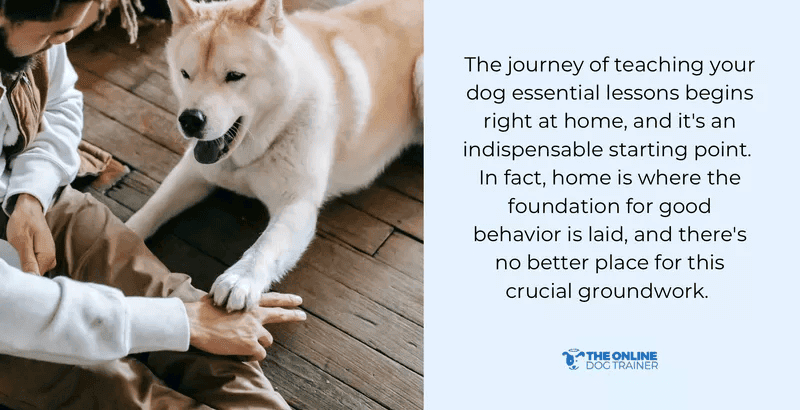
In fact, home is where the foundation for good behavior is laid, and there's no better place for this crucial groundwork.
By focusing on your dog's behavior within the home environment, you'll be better equipped to help them become less aggressive when they venture outdoors.
#2: Learn the Five Golden Rules of Doggy Dan Through the Dog Calming Code™️ Program
In my years as a dog trainer, I have seen how even the most bossy, authoritarian dogs turn into calm dogs who learn how to listen and chill.
These transformations inspired me to make the Dog Calming Code program featuring the Doggy Dan Five Golden Rules.

These Five Golden Rules of Dog Training were created to help dog owners like you TAKE BACK CONTROL through SIMPLE but POWERFUL strategies.
Here’s a quick preview of how you’re going to achieve leadership in your bossy dog’s eyes through the Dog Calming Code.
Doggy Dan Golden Rule #1: Control the Food
Your bossy dog has to know that you control the food and everything that comes with eating: mealtimes, scraps, eating habits.
Food is HUGE for dogs, and the one who controls the food is the one who is in charge.
Doggy Dan Golden Rule #2: Delay Attention
After separation, your dog will challenge your leadership by going to you. This rule teaches dog owners the power of delaying acknowledgement to establish leadership, just like leader of the pack would.
Doggy Dan Golden Rule #3: Doing Things On Your Own Terms
Your bossy dog has to see this: all the decisions come from you. They’re not the one in charge, so they absolutely just have to chill and hand all the decision making to you.

Doggy Dan Golden Rule #4: Deal with Danger
A dominant dog who thinks they’re in charge will always call out danger (thus the barking!). Rule #4 is about helping you become that calm, confident, CAPABLE leader who knows how to say to dogs “I am the one in charge here, so I take care of danger.”
Doggy Dan Golden Rule #5: Take Control of the Walk
Controlling dog aggression should not just stop at home. Even while you are outdoors, your dog has to know you’re in charge. This keeps them from challenging other dogs because they know it’s you who is the leader. Rule #5 makes this possible.
#3: Be Calm
No one earns a dog’s affection even more than a caring dog owner who’s also sure and firm in their role as the pack leader.
A dog who knows their owner isn’t one to chicken out easily, they’ll see your authority.
However, if you’re not taking control, they will sense your emotions, including fear and worry about them.
By remaining confident and not easily fazed, you establish yourself as the dependable leader your dog can trust and follow.
#4: Protect Your Space
Your personal space is important, and your dog understands that. When they invade your space without invitation, it sends a clear message that they can boss you around.

To maintain your authority, protect your space by only giving attention on your terms. This reinforces the idea that your dog has no power over you because YOU are the leader.
#5: Don't Let Your Dog Make the Decisions
Dogs that are given too much freedom to make decisions may start to believe they are in control.
Be resolute in not granting your dog decision-making privileges. It's you who leads them, and you have the final say in matters.
#6: Be Firm With Your Rules and Boundaries
Dogs may test your authority from time to time, probing to see if you'll bend the rules. Stay steadfast and unwavering in your boundaries.
Consistency is vital in reinforcing the rules you've set.
#7: Practice Calm, Consistent Corrections
When correction is necessary, opt for timeouts as a method. This approach encourages a loving connection with your dog without resorting to threats or aggression. It reinforces the idea that your relationship is built on mutual respect and understanding.

#8: Socialize Your Dogs
One of the most important parts of obedience training is exposing your dogs to proper socialization experiences.
Once you’ve started letting your dog know they’re not the boss, you can start to slowly socialize them with other dogs.
My recommendation as a dog trainer is to start in a place where your dog is comfortable and where they can meet other dogs as their equals.
#9: Use Positive Reinforcement Training
Dogs are fast learners. Rewarding good behavior helps your dog understand which behavior to follow. Once they associate rewards good behavior, a pattern will be established.
Five Mistakes Dog Owners Make That Cause Dog Dominance
#1: Not Correcting The First Sign of Dominance
One of the most common mistakes dog owners make is failing to address the initial signs of dominance in their dogs.
Dogs often give subtle cues when they are testing their boundaries and asserting dominance.

These signs can include pushing their way to the front during walks, growling when asked to give up a toy, or attempting to claim your personal space.
Ignoring these early warning signs can allow the problem to escalate.
It's crucial to address these behaviors promptly with appropriate training and correction to prevent them from becoming ingrained patterns of dominance. I often recommend using Timeout to nip these behaviors in the bud.
#2: Thinking Dominance Aggression will Just Go Away
Some dog owners mistakenly believe that dominance aggression will naturally subside over time.
They may assume that their dog will “grow out of it” or that it's just a phase.

However, dominance aggression rarely resolves on its own and often worsens if left unaddressed.
This type of behavior can become deeply ingrained, making it more challenging to correct as time goes on. It's essential to take proactive steps to address dominance aggression through training, socialization, and consistent enforcement of rules.
#3: Letting the Dog Rule the House
Allowing your dog to rule the house is a common mistake that can contribute to dominance issues.
This can manifest in various ways, such as allowing your dog to claim the best spots on the couch or bed, letting them decide when and where they eat, or permitting them to demand attention whenever they please.
When dogs believe they are in charge, it can lead to a host of behavioral problems, including aggression, barking around the property and lunging on the leash. To prevent these, establish clear boundaries and rules within your home and consistently enforce them.
#4: Lack of Consistency in Rules and Boundaries
When rules aren’t reinforced consistently, your dog will fall back into a pattern of aggression.

For example, if you allow behavior that allows them to be the boss again (even though you’re training them not to be) it sends mixed signals to the dog.
To address this, it's crucial that you follow through with the rules and boundaries you've set. Make sure other family members are on the same page.
#5: No Proper Training in Place
Perhaps the most significant mistake is not having a proper training routine in place from the beginning.
Some dog owners realize too late that they need to be a leader in their dog’s eyes.
A reliable training program introduced early on can save dogs and dog owners from the problems of dominant behavior. Work with a professional dog trainer to improve your training experience.
Learn How to Handle Dominant Dog Behavior with the Dog Calming Code
Training your dog to see you as the gentle, trustworthy of your pack requires you do things right.
Why? Because there are so many small, seemingly insignificant mistakes that can mess up your training.
If you want a training guide for dominant dogs, I encourage you to check out The Dog Calming Code.
I made sure the training instructions are simple for even new dog owners to understand but POWERFUL enough to cover the issues that lead to dog aggression.
Because I believe that dominant, bossy dogs — when trained right — will happily switch off and pass the baton of leadership to you.
And every dog deserves to switch off, relax, and feel “I am not the leader here. I don’t need to fight with other dogs. I don’t need to be brave and alert all the time. I can absolutely chill!”
That’s an absolute gift to your pet.
If you want to learn about the Dog Calming Code, you can check it out here.

~ Doggy Dan

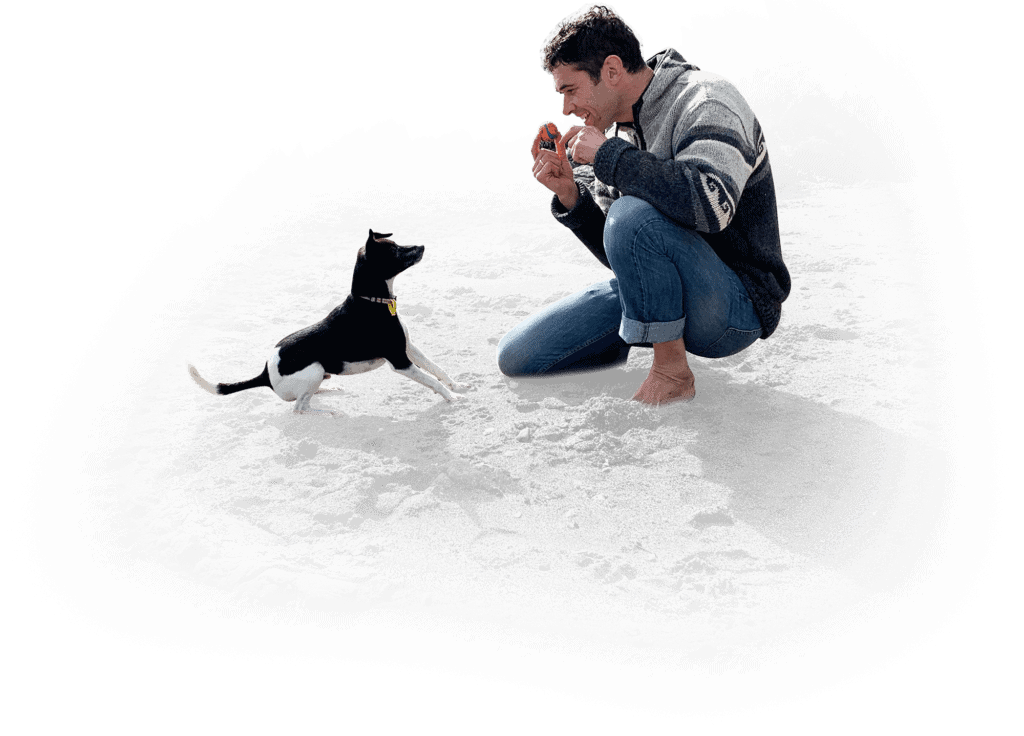
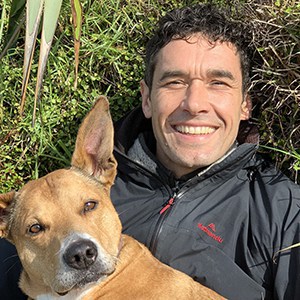

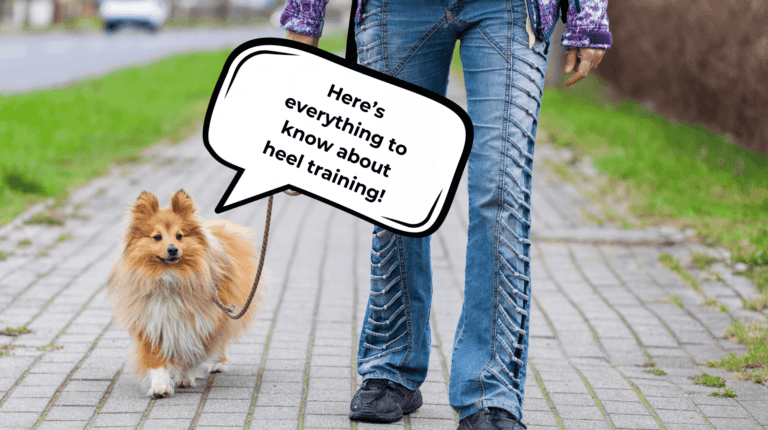
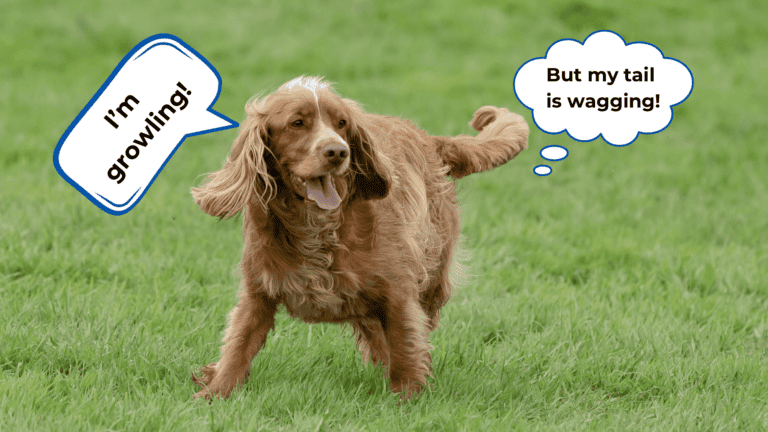
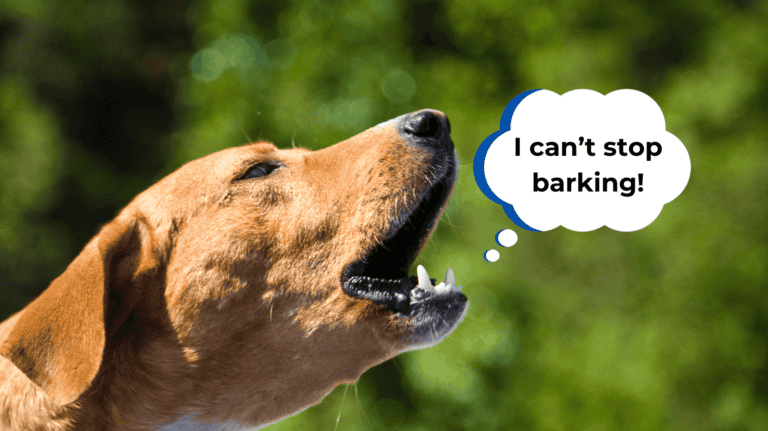

4 Responses
Hey, my dog has got aggressive day to day, I mean to say much more aggressive. He starts growling then and now. He has bitten my sister once just when she touched him and asked to go to his place from her room. He grows at me every time when I scold him. Today night he was sleeping and there was a piece of bread lying on side few inches far, as I put my hand to take the bread away without touching him, he tried biting me with full growling behavior. He kept growling, barking with teeths out till I was standing there (He was behind the gate because of which I waa safe). How correct him? Can you please suggest? I am really stressed.
Check out the free webinar, you’ll love it!
The Reactivity Webinar happens weekly on Wednesday and Sunday at 3pm EST (USA time). The link for the webinar is here, and you can choose this week or the following week: https://theonlinedogtrainer.com/reactivity-webinar/
If you register, you’ll get the recording via email after the webinar
My new miniture schnauzer is exhibiting fear & shyness. Will not play or cuddle. What to do?
Hi Kathryn,
It can be a really frightening experience for dogs when they are settling into their new home, & it’s actually really normal for dogs/puppies to behave this way. If your dog seems uneasy or frightened then my advice is to give her so me space, try not to force interactions on her and allow her to simply observe you and her new environment. It can feel a little counter-intuitive to give a new dog space….most people think interactions creates a bond…..but in actual fact, respecting a dog’s right to not interact is a very good thing for them to realise. I would also avoid taking her out for a walk until she is more comfortable and confident….we want to avoid overwhelming her further. She will start to feel more confident in a few days so just take things at her pace. All the Best, Doggy Dan